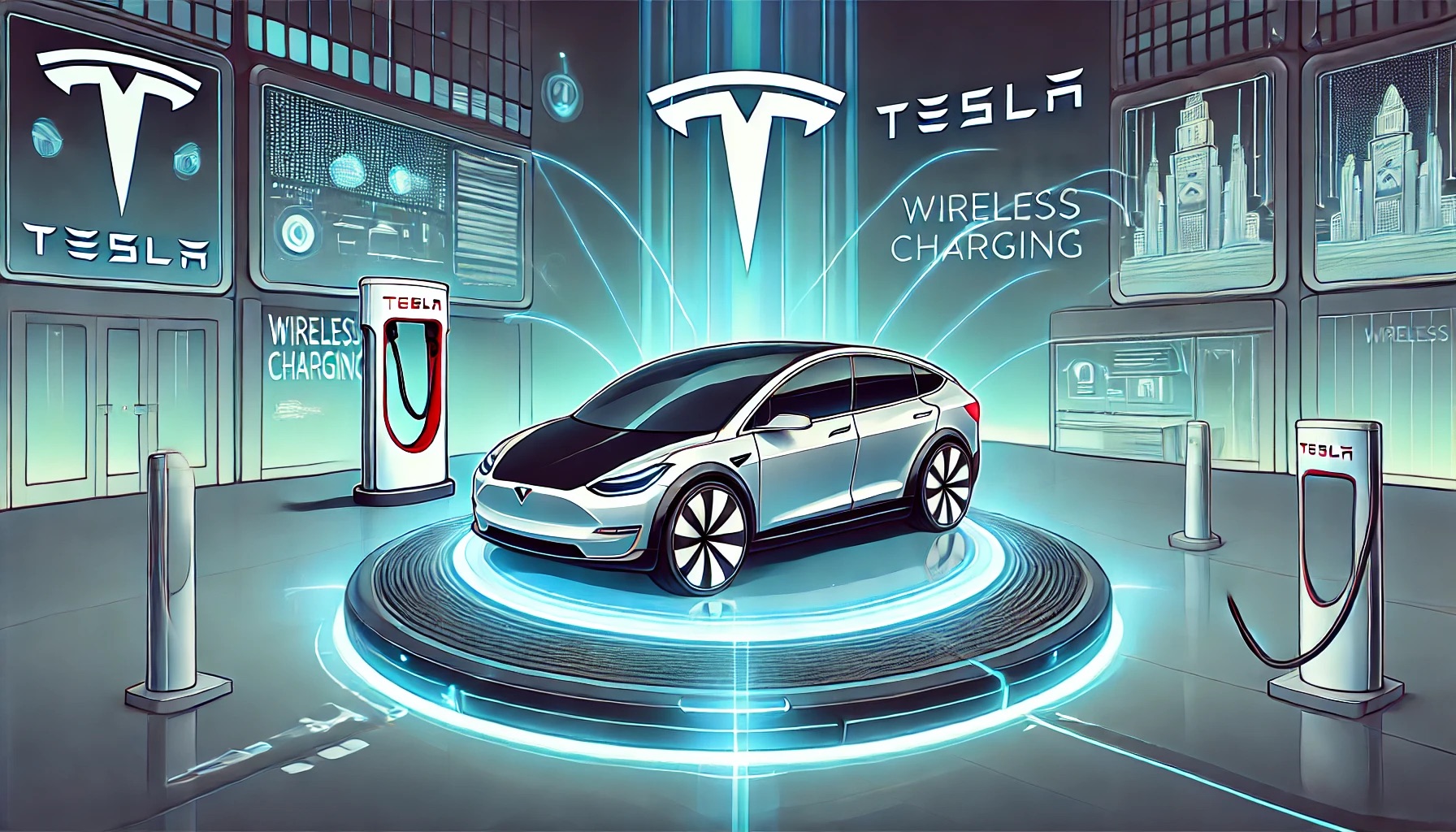Tesla confirmed that its Cybercab wireless charging system boasts over 90% efficiency, responding to concerns about potential heat waste. The announcement came after a debate sparked by tech reviewer Marques Brownlee on X, who questioned the effectiveness of wireless EV charging systems.
Tesla Unveils Wireless Charging for Cybercab at ‘We, Robot’ Event, Surpassing Wall Connector Speeds
Esla has stated that its wireless charging system for the Cybercab has a charging efficacy of "well over 90 percent" in response to inquiries regarding whether it would be inefficient compared to wired charging.
Tesla claimed on October 19 after tech reviewer Marques Brownlee, also known as MKBHD, emphasized the "massive heat waste" in wireless charging systems in a post on X. He claimed that a "noble goal" in wireless charging for electric vehicles (EVs) would only achieve "maybe 75 percent efficiency."
In reply, Tesla explicitly declared that the system's "efficiency is significantly greater than 90 percent," which prompted Brownlee to send an emoji of the eyes.
“I stand corrected. Can’t wait for it to ship,” Brownlee wrote after being encouraged to say more by another user.
According to Teslarati, the announcement follows Tesla's "We, Robot" event earlier this month. Elon Musk disclosed that the recently unveiled Cybercab would be recharged wirelessly using inductive charging technology rather than incorporating a NACS port.
The company's future robotaxi plans were anticipated to include wireless charging; however, the system was not hinted at until the "We, Robot" event. During the presentation, Tesla also demonstrated a Cybercab charging at 19kW at 35 state-of-charge (SoC), surpassing the Wall Connector's approximately 11.5kW.
Some anticipated that wireless charging would be a significant component of the robotaxi system before the event, as the company had also patented a wireless charging device in September. Tesla also patented the automatic cleaning system in July, which would be hinted at in conjunction with the inductive charger.
Tesla Highlights Autonomous Cybercab with 25kW Wireless Charging in New Video, Sparks Online Buzz
Afterward, Tesla released a video on October 17 that sparked a conversation between Brownlee and others. The video depicts a vehicle with a charging capacity of 25kW. The Cybercab is anticipated to be operated with "no hands required," as the company states in the post. The video also emphasizes Tesla's emphasis on autonomy, which encompasses driving, cleaning, and charging.
Last year, Tesla's acquisition of Wiferion, a wireless charging company, was also speculated to be a precursor to the company's entry into the industry. The company would subsequently sell Wiferion, but it has retained some engineers who were brought on board as part of the acquisition.
Teslarati was also present at the "We, Robot" event, where Tesla unveiled its two-seater Cybercab and its larger autonomous "Robovan," which is expected to be a 12- to 14-seat self-driving bus.



 FCC Exempts Select Foreign-Made Drones From U.S. Import Ban Until 2026
FCC Exempts Select Foreign-Made Drones From U.S. Import Ban Until 2026  Elon Musk Says X Will Open-Source Its Algorithm Amid EU Scrutiny
Elon Musk Says X Will Open-Source Its Algorithm Amid EU Scrutiny  Dell Revives XPS Laptop Lineup With New XPS 14 and XPS 16 to Boost Premium PC Demand
Dell Revives XPS Laptop Lineup With New XPS 14 and XPS 16 to Boost Premium PC Demand  Baidu’s AI Chip Unit Kunlunxin Prepares for Hong Kong IPO to Raise Up to $2 Billion
Baidu’s AI Chip Unit Kunlunxin Prepares for Hong Kong IPO to Raise Up to $2 Billion  FCC Approves Expansion of SpaceX Starlink Network With 7,500 New Satellites
FCC Approves Expansion of SpaceX Starlink Network With 7,500 New Satellites  AMD Unveils Next-Generation AI and PC Chips at CES, Highlights Major OpenAI Partnership
AMD Unveils Next-Generation AI and PC Chips at CES, Highlights Major OpenAI Partnership  EU Orders Elon Musk’s X to Preserve Grok AI Data Amid Probe Into Illegal Content
EU Orders Elon Musk’s X to Preserve Grok AI Data Amid Probe Into Illegal Content  Anthropic Launches HIPAA-Compliant Healthcare Tools for Claude AI Amid Growing Competition
Anthropic Launches HIPAA-Compliant Healthcare Tools for Claude AI Amid Growing Competition  Hyundai Motor Shares Surge on Nvidia Partnership Speculation
Hyundai Motor Shares Surge on Nvidia Partnership Speculation  Intel Unveils Panther Lake AI Laptop Chips at CES 2025, Marking Major 18A Manufacturing Milestone
Intel Unveils Panther Lake AI Laptop Chips at CES 2025, Marking Major 18A Manufacturing Milestone  Trump Considers Starlink to Restore Internet Access in Iran Amid Protests
Trump Considers Starlink to Restore Internet Access in Iran Amid Protests  Samsung Electronics Poised for Massive Q4 Profit Surge on Soaring Memory Chip Prices
Samsung Electronics Poised for Massive Q4 Profit Surge on Soaring Memory Chip Prices  Ford Targets Level 3 Autonomous Driving by 2028 with New EV Platform and AI Innovations
Ford Targets Level 3 Autonomous Driving by 2028 with New EV Platform and AI Innovations  Mercedes-Benz to Launch Advanced Urban Self-Driving System in the U.S., Challenging Tesla FSD
Mercedes-Benz to Launch Advanced Urban Self-Driving System in the U.S., Challenging Tesla FSD  Supreme Court to Hear Cisco Appeal on Alien Tort Statute and Human Rights Liability
Supreme Court to Hear Cisco Appeal on Alien Tort Statute and Human Rights Liability  Nvidia Appoints Former Google Executive Alison Wagonfeld as First Chief Marketing Officer
Nvidia Appoints Former Google Executive Alison Wagonfeld as First Chief Marketing Officer  SK Hynix Shares Hit Record High as AI Memory Demand Fuels Semiconductor Rally
SK Hynix Shares Hit Record High as AI Memory Demand Fuels Semiconductor Rally 































